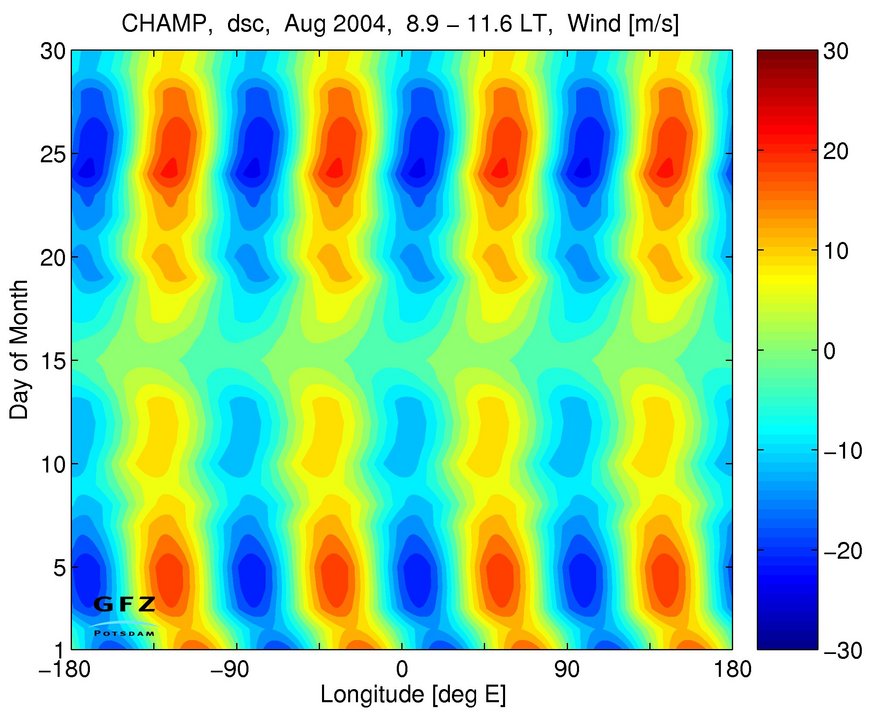The accelerometer onboard CHAMP located at the center of gravity enables us to derive the thermospheric zonal wind at orbit altitudes (~400km). The good data coverage of the satellite allows investigating the zonal wind under different aspects. A climatology of the equatorial zonal wind deduced from CHAMP was presented by Liu et al. (2006). The study of the longitudinal dependence of the zonal delta wind (deviations from the zonal average) revealed that major longitudinal dependences are confined to the morning hours, 03-09 local time (LT), reversing sign between June and December Solstices (Häusler et al. 2007). During Equinox seasons these large scale features are almost absent but a dominance of the wavenumber 4 at some LT sectors was discovered by performing a Fourier transform. The wave 4 structure (see figure below) is believed to be caused by the eastward propagating nonmigrating diurnal tide with zonal wavenumber 3 (DE3) which is in turn primarily excited by latent heat release in the tropical troposphere. We intend to find out the efficiency of the coupling from the mesosphere to the upper thermosphere. Whether the wave-4 pattern of the equatorial ionization anomaly could be responsible for the longitudinal modulation of the thermospheric zonal wind was investigated by Lühr et al. (2007).


